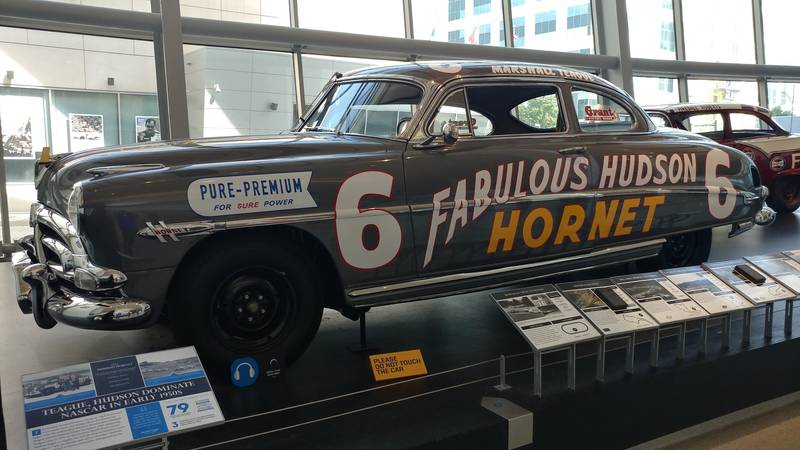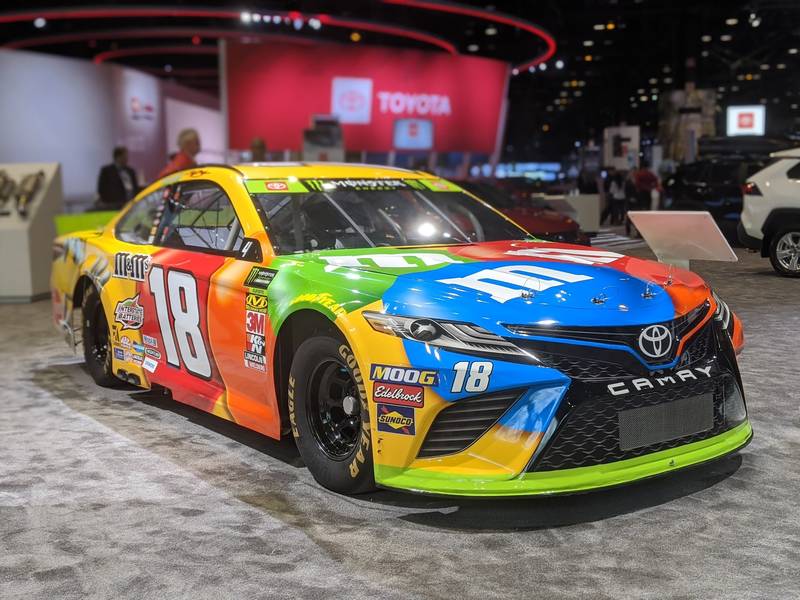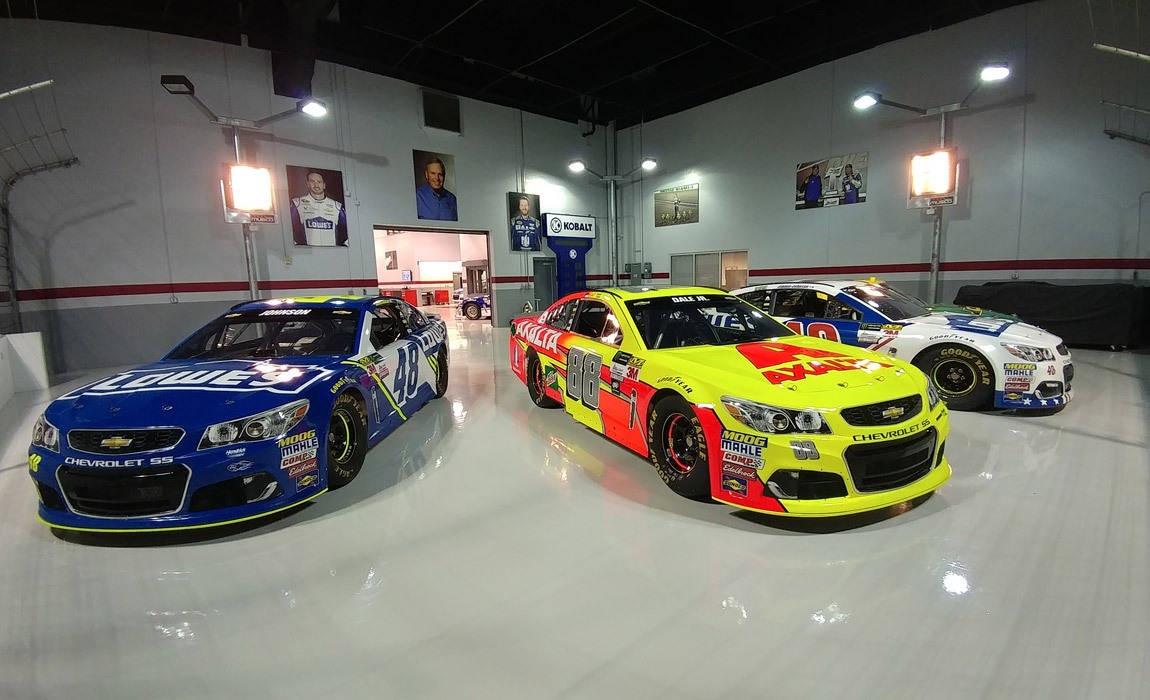The NASCAR race car has come a long way since the early days of moonshiners modding their cars to go faster. In this blog post, we will explore the evolution of the NASCAR race car from its origins to the Next Gen platform that is used today. We will take a look at how the sport has changed over time and what changes have been made to the cars themselves. So, without further ado, let's dive into the history of NASCAR!
Those of you in Australia or the UK may not be familiar with NASCAR compared to other global racing competitions like Formula 1 or even Indy Car but in the United States, it is still the king. Standing for the National Association for Stock Car Auto Racing, NASCAR racing is an experience that goes well past simply attending a race. Indeed, it is an entire lifestyle for many Americans. In fact, super fans are even finding ways to buy a NASCAR for their own collection.
Early Stock Car Racing (1900's - 1948)
The original vision behind NASCAR – as its name suggests – was for ordinary “stock” cars to race each other, determining which manufacturers made the fastest street-legal automobiles. This in turn evolved from the moonshiners who needed fast cars to outrun the police.
Of course, as with anything guys do ... this quickly evolved into a competition to see who's car was faster. This early age of stock car racing evolved from unofficial tracks to ultimately a 4.1-mile course in Daytona Beach, Florida was established. This course included a 1.5-2-mile stretch of sandy beach in one direction and pavement in the other.
The popularity of this early stock car race attracted corporate money as well as wealthy drivers and in 1948, NASCAR was formed.
Because the races were originally run by "stock" cars, the tracks were kept deliberately simple. However, over the years as the zeal for improved speed, better handling, and of course the need to improve driver (and spectator) safety, has led to a number of improvements.
While the NASCAR race cars have continued to evolve into something that is far from the original "stock car" concept, the organization has worked hard to ensure that the vehicles are still somewhat recognizable as the brands sponsored by the manufacturers. For instance, the Toyota racing team's race car is designed somewhat like a Camry, Chevy's like a Camaro ZL1, and Ford's models are intended to resemble a Mustang.
In 2022, while NASCAR remains one of the most popular choices for auto racing enthusiasts to attend in person, it is even more popular as a sport to be watched online. There has even been an official Sports Betting Policy since 2019 to help combat any appearance of impropriety among teams and owners due to the rapidly expanding world of sports betting on NACAR races. Fans seem to be responding favorably to this now legal way to enhance their participation in the sport and NASCAR wagers are now one of the top forms of online sports betting in Virginia.
Let's take a look at the cars now and see how the iconic official NASCAR race car has evolved over nearly a century of development.
Pre-Generation One (Early 1948)
NASCAR was founded in February 1948, during the years when the American manufacturing was still recovering from the turbulent years of the second world war. Because of this, the first races featured pre-World War II automobiles such as the 1939 Ford Coupe. There were few rules and regulations at this time, which is why this era is regarded as being pre-generation one.

Generation One (1948 – 1966)
The American Industrial machine was still used to working at breakneck pace in 1948, so it wasn’t surprising to see better cars being raced on NASCAR circuits before the year was out. The first generation of NASCAR vehicles were 100% strictly stock frames and bodies, although the doors were strapped shut and seat belts were mandatory – despite not yet being legally required on regular streets. A heavy-duty rear axle was mandated to try and prevent cars from flipping during the race, but these vehicles were almost identical to the on-street versions in every other way.
In fact, the best way to think of this era was the phrase by Ford dealer and racing innovator Bob Tasca Sr: "Win on Sunday ... sell on Monday!" This was the motivation for automakers to invest millions of dollars in the sport. Quite literally, during this time, if Ford's racing teams were doing well, people wanted to buy more Ford cars for their personal use.
Generation Two (1967 – 1980)
By 1967 it was widely agreed that some changes needed to be made to ensure the safety of the drivers and spectators at NASCAR circuits. Average street cars had become much, much faster during the past twenty years. The sport had evolved in terms of the race tracks too.
What had begun with simple tracks had seen the growth of "Superspeedways" where the cars needed high banks and long straightways to hit maximum performance. While NASCAR only designates Talladega and Daytona as superspeedways, the difference between nearly all the newly built tracks and what had come before was a huge improvement. This led to large crowds attending races and multiple racing events throughout the year on smaller tracks like Richmond Raceway in Virginia making it economically viable for investors to create new venues around the country for auto racing.
Three different companies were chosen to build and design special chassis modifications for NASCAR-race cars. While the chassis moved away from a strictly stock design, the car's frame was mandated to remain stock, keeping the modifications invisible from spectators' eyes.
Generation Three (1981 – 1990)
By the the 1980’s, the vehicles racing at NASCAR were starting to look considerably different from a genuine stock car. During the Generation Three era, the race cars featured no doors, large spoilers, and streamlined aerodynamic designs. Additionally, all cars had to conform to a smaller wheelbase of 110 inches, making them smaller than typical cars from previous generations.
This was an iconic era for NASCAR racing since it was both an effort to make the cars more closely resemble actual stock cars once again. Additionally, a large number of American manufacturers were involved - Chevrolet, Ford, Oldsmobile, Pontiac, Buick, Dodge, and Chrysler.
As power increased, the need for restrictor plates on superspeedway races was also required to prevent the cars from reaching unsafe speed levels. For instance, in 1987 at Talladega, Bill Elliott set a NASCAR qualifying record of 212.809 mph but Bobby Allison's car went airborne, nearly flying into the stands during a wreck.
That race led to a renewed focus on safety, ultimately creating the Generation Four car and the beginning of the end regarding attempts to make the vehicles truly resemble the cars you'd see on the street. Aside from distinctive livery designs though!
Generation Four (1991 – 2006)
This is generally regarded as being the turning point after which NASCAR vehicles stopped resembling showroom models altogether. It is said that the only recognizable parts of the bodies of the cars in this generation were the bumpers, noses, and tails. Paint jobs had become much more extravagant as more advertising money began pouring into the sport than ever before, and steel bodies were replaced by fiberglass to reduce the weight of the cars. Wind tunnels had become standard by 1991 too and were being used by every team to find aerodynamic advantages they could exploit to gain faster lap times.
Generation Five (2007 – 2012)
Often said to be the beginning of the modern sport of NASCAR, Generation Five’s cars were given the nickname “The Car of Tomorrow”. Every car shared a similar appearance with a front splitter and rear wing. As well as looking fantastic and being the fastest NASCAR cars ever raced to date, Generation Five was also lauded for the attention and improvements made to driver safety – said to be the greatest gains ever made in the history of the sport.
This was in large part to several driver deaths and serious injuries during the previous years, including Dale Earnhardt at the 2001 Daytona Beach race.

Generation Six (2013 – 2021)
Generations have been getting shorter and shorter in recent years as the pace of innovation in vehicle design has continued to gather speed. Some had felt unhappy that Generation Five vehicles had strayed so far from the “stock” look that NASCAR was supposed to be all about. For this reason, the sixth-generation vehicles were designed to look more like a typical showroom vehicle.
Ironically, this has made it easier to do as modern street cars have also made attempts to look more like race cars.
This made the transition moderately easier for NASCAR engineers and designers to emulate within the confines of high performance and driver safety standards that are paramount to the sport today. These cars were faster, tougher, and a little bulkier than Generation Five, relying strongly on aerodynamics for maximum grip.
NASCAR Next Gen aka Generation Seven (2022 - )
The cars being raced in 2022 are modeled after Australian Supercars and GT3 racers, although manufacturers have the freedom to shape the race car bodies to better represent their brands if they wish. Engine rules remain unchanged, with the existing limit of 358 cubic inches remaining in place. Horsepower is limited to 550 for restrictor-plate racing and 670 for all other tracks.
One of the major improvements here is that the platform was designed to lower costs related to the development and racing of the new Gen-7 car. This, NASCAR hopes will help bring more manufacturers back into the sport and return the excitement that many fans today feel is missing from the stock car racing they enjoyed as kids.
For instance, today, only Chevrolet, Ford, and Toyota are the only manufacturers involved.
We can only hope that in the future, these improvements will allow Dodge - undeniably the home of iconic American muscle today - to return to NASCAR and compete with the best of the best again.
